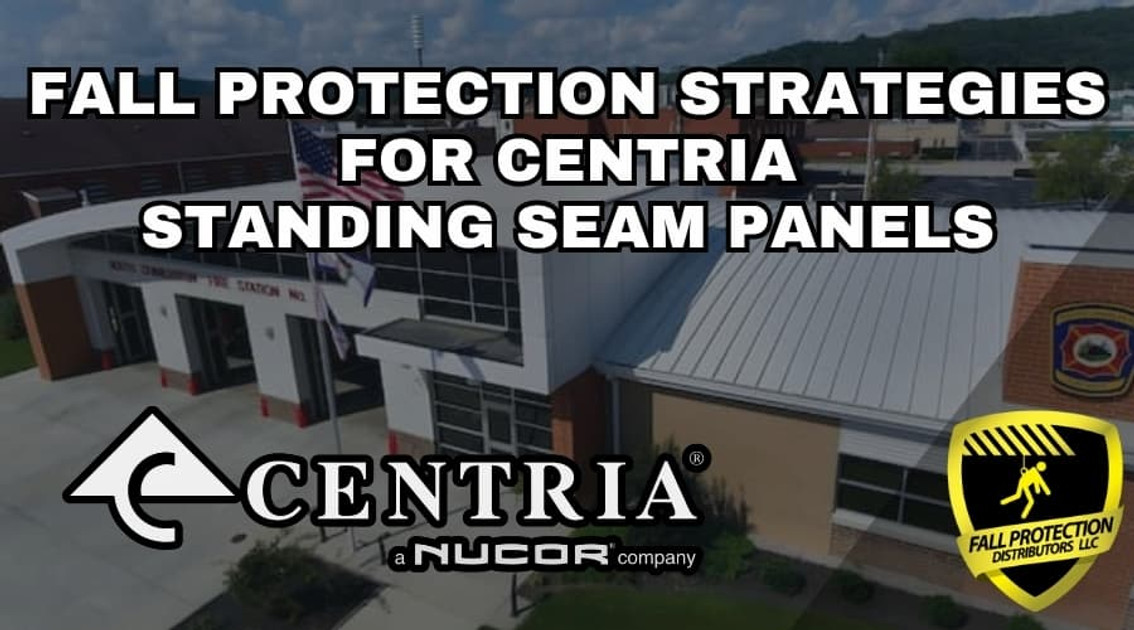Fall Protection Strategies For Centria Standing Seam Roof Systems
Posted by Howie Scarboro - CEO Fall Protection Distributors, LLC on Nov 12th 2025
See the Roof Anchor Compatibility Chart for Centria (aka as H.H. Robertson) Standing Seam Panels.

Who Is Centria?
Centria has shaped the modern metal building industry for more than a century. Founded in 1906 as H.H. Robertson, the company initially developed advanced coatings that improved the longevity and appearance of architectural metals.
Over time, it became a major manufacturer of light-gauge steel trusses, corrugated metal panels, and insulated composite wall systems, transforming the construction landscape.
Centria's legacy includes several industry firsts. The company introduced one of the earliest concealed-fastener standing-seam roof systems, the SRS Series, which redefined weather-tight roofing for commercial and industrial buildings. Through decades of innovation, Centria earned its reputation as a trusted name for quality and performance in architectural metal systems.
In 2021, Nucor Corporation, America's largest steel producer, acquired Centria as part of its long-term strategy to expand into complete building envelope solutions. Today, Centria operates within the Nucor family of companies, combining over a hundred years of metal innovation with modern technology to deliver advanced, energy-efficient, and visually striking wall and roof systems for commercial, institutional, and industrial buildings worldwide.
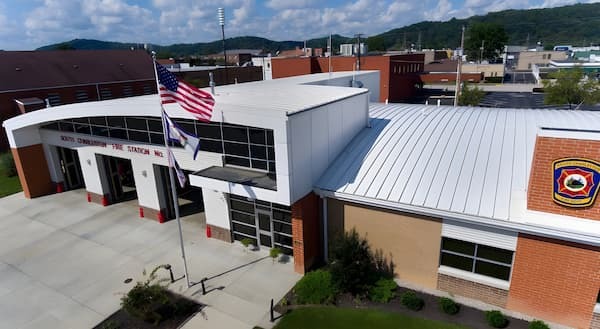
Why Are Non-Penetrating Fall Protection Anchors Critical for Centria Standing Seam Roofs?
Centria's standing seam roof panels are floating systems that allow controlled thermal movement.
Each seam and clip expands and contracts with temperature changes, maintaining a continuous, weather-tight seal. When workers drill through the panels or attach anchors directly with fasteners, that movement is restricted. Over time, this causes panel distortion, moisture intrusion, corrosion, and loss of warranty coverage.
Non-penetrating fall protection anchors provide a secure, OSHA- and ANSI-compliant solution that eliminates these risks. Systems such as the SSRA1 Standing Seam Roof Anchor, SSRA2 Adjustable Roof Jack Adapter, and SSRA3 Anchor Plate clamp directly to the seams without drilling or damaging the panel surface. This design maintains the roof's structural integrity, protects its finish, and allows the panels to move naturally.
For jobs that require horizontal mobility across long roof spans, the SSRA HLL 100-foot Temporary Horizontal Lifeline Kit offers continuous tie-off for two workers. For roofs requiring permanent protection, the Super Anchor 120-foot Permanent Horizontal Lifeline System provides a ready-to-use setup that stays in place year-round.
On steep roof slopes ranging from 6:12 to 12:12, the Ridge Pro Steep Assist Anchor offers a fast and secure alternative. It hooks directly over the roof ridge, allowing workers to attach their lifeline before stepping onto the roof and keeping them tied off through every phase of access, work, and descent.
Pairing Centria's precision-engineered standing seam panels with non-penetrating fall protection systems ensures total compliance, protects roof warranties, and enhances worker safety on every project.
SRS 3 T-Seam Panels
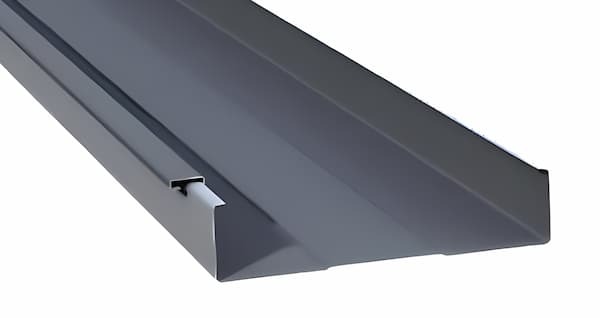
The Centria SRS 3 panel sets the standard for structural standing seam roofing, offering exceptional performance and refined architectural appeal.
Engineered for both low-slope new construction and retrofit applications, this system features a mechanically seamed T-configuration that precisely interlocks panels. Concealed clips maintain the roof's floating design, allowing for controlled thermal expansion and contraction while preventing fastener fatigue and leaks. See the Roof Anchor Compatibility Chart for Centria (aka as H.H. Robertson) SRS 3 T-Seam Standing Seam Panels.
Centria SRS 3 panels are available in 12-inch, 16-inch, and 18-inch widths with a 3-inch seam height, providing design flexibility across a range of building types. Centria manufactures this system in 18-, 20-, 22-, and 24-gauge steel or aluminum, all 100% recyclable, and available in Centria's high-performance Cool Roof color finishes for enhanced solar reflectivity and energy efficiency. Contractors can also choose crimp-free curved versions for bold, architectural designs that combine strength with visual appeal.
Fall Protection for SRS 3 Roof Systems
Working safely on Centria SRS 3 roofs requires a non-penetrating fall protection strategy that maintains the roof's mechanical seam and weather-tight seal.
All SSRA products are compatible with the steel versions of SRS 3 panels, offering OSHA- and ANSI-compliant anchorage without drilling or compromising the finish. For aluminum panels, alternative methods such as the Ridge Pro Steep Assist Anchor are an excellent option for roof pitches between 6:12 and 12:12.
The SSRA1 Standing Seam Roof Anchor provides the foundation of the system, clamping directly to the seams with opposing set screws that deliver uniform compression. Each SSRA1 features a 5,000-pound-rated tie-off point, maintaining the roof's structural integrity and weather resistance while providing workers with a secure connection point for personal fall arrest.
The SSRA2 Adjustable Roof Jack Adapter mounts on top of two SSRA1 anchors to support 10-foot walkboards, giving crews a stable, level work surface across steep spans. Its adjustable height accommodates different seam profiles and pitches, making it ideal for both installation and maintenance tasks.
The SSRA3 Anchor Plate expands the system's versatility by linking two SSRA1 anchors to create a mounting base for horizontal lifelines. When paired with the SSRA HLL 100-foot Temporary Horizontal Lifeline Kit, it allows two workers to move freely across the roofline while staying tied off. For buildings that require regular inspections or long-term roof access, the Super Anchor 120-foot Permanent Horizontal Lifeline Kit offers a fixed, ready-to-use fall protection system. It distributes loads evenly across multiple seams, ensuring continued protection and preserving the roof's warranty.
For steep aluminum SRS 3 roofs with a 6:12 to 12:12 pitch, the Ridge Pro Steep Assist Anchor remains the preferred option. It hooks securely over the ridge, allowing workers to attach their lifeline before stepping onto the metal surface. This setup ensures continuous tie-off from ladder to ridge and back again, maintaining safety throughout every phase of work.
Together, these systems deliver a complete, non-penetrating fall protection solution for Centria SRS 3 panels. They protect the roof's warranty, maintain OSHA compliance, and ensure that every roofer and maintenance professional stays safe while working on Centria's industry-leading standing seam systems.
Versapanel Insulated Metal Roof Panels
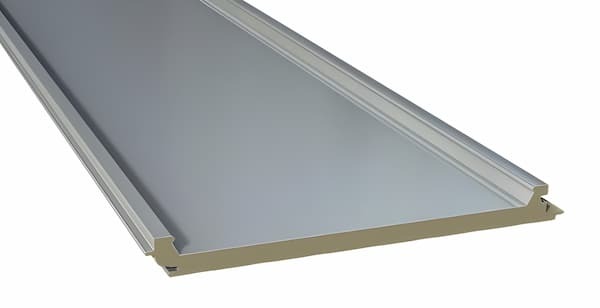
The Centria Versapanel Insulated Metal Roof System combines architectural elegance, thermal efficiency, and long-term durability, making it one of the most energy-efficient roofing options in the industry.
Each panel consists of two structural steel skins separated by a high-performance polyisocyanurate foam core, providing superior insulation. Available in thicknesses from 1.75 to 4 inches, Versapanel systems achieve R-values up to 33.5, significantly reducing heating and cooling costs over the life of the building. See the Roof Anchor Compatibility Chart for Centria (aka as H.H. Robertson) Versapanel Standing Seam Panels.
The panels measure 36 inches wide and can reach up to 52 feet in length, providing broad coverage for large commercial structures. Their bold ribbed profile gives buildings a sleek, modern appearance while delivering proven strength under wind, snow, and impact loads. The factory-applied side joint and field-sealed connections create a continuous air and vapor barrier, improving moisture resistance and energy performance.
Energy efficiency is a defining characteristic of the Versapanel system. Its continuous insulation, thermal breaks, and low thermal drift properties minimize heat loss and ensure long-term energy savings. The panels install quickly in all weather conditions, providing a lightweight yet robust roofing solution for industrial complexes, educational facilities, warehouses, and retail centers. Sustainability remains central to Centria's mission. Each Versapanel features steel skins made with recycled content and is nearly 100% recyclable at the end of its service life, contributing to LEED certification and green building goals.
Fall Protection for Versapanel Roof Systems
When working on Centria Versapanel Insulated Panels, safety requires specialized anchorage methods that protect both workers and the panels' structural integrity.
Because the Versapanel's seam shape and insulated foam core do not support clamp-style connections, SSRA seam-mounted products are not compatible with the Versapanel. Instead, crews should use non-penetrating ridge-mounted systems that ensure complete OSHA and ANSI compliance without compromising the roof's air or vapor barrier.
For roofs with slopes between 6:12 and 12:12, the Ridge Pro Steep Assist Anchor provides an ideal solution. This non-penetrating system hooks securely over the ridge, allowing workers to attach their lifeline before stepping onto the roof surface. The Ridge Pro maintains a firm grip under load without drilling or fasteners, preserving the roof's integrity and insulation performance. Its portability makes it ideal for quick-service jobs, inspections, and maintenance tasks that require temporary access.
By combining Centria's energy-efficient Versapanel system with non-penetrating solutions like the Ridge Pro Steep Assist Anchor, contractors can achieve a complete, OSHA-compliant fall protection plan that protects both the crew and the roof. This approach ensures long-term safety, preserves warranty coverage, and keeps every Versapanel installation performing at peak efficiency.
SDP175 Snaplock Panels

The Centria SDP175 panel delivers strength, visual appeal, and cost efficiency in a single standing seam system.
This architectural panel features a 1¾-inch-high snaplock seam that installs easily without special seaming tools. Available in 16-inch and 18-inch coverage widths, it offers three distinctive pan profiles to complement a wide range of building styles. See the Roof Anchor Compatibility Chart for Centria (aka as H.H. Robertson) SDP175 Snaplock Standing Seam Panels.
The SDP175 is available in 22- and 24-gauge steel and can be produced up to 40 feet in length, minimizing endlaps for a cleaner finish. Centria provides multiple protective coatings, including Galvalume® AZ50, Galvanized G90, and Galvalume® Plus. Recommended for minimum slopes of 3:12, the panel installs over open purlins, steel decks with insulation, or plywood substrates. The combination of sleek appearance, reliable strength, and wind uplift resistance makes the SDP175 an ideal choice for modern low-slope metal roof applications.
Fall Protection for SDP175 Panels
When working on Centria SDP175 panels, a non-penetrating fall protection system is essential to protect the roof's snaplock seam and watertight performance.
For 22- and 24-gauge steel panels, the SSRA1 Standing Seam Roof Anchor provides a secure 5,000-pound-rated tie-off point by clamping directly to the seam without drilling or fasteners. Its twelve opposing set screws apply even compression, maintaining the roof's finish and weather integrity.
Crews can expand safety coverage by using the SSRA2 Adjustable Roof Jack Adapter, which mounts atop two SSRA1 anchors to support 10-foot walkboards. This setup creates a stable, level working surface and helps prevent fatigue while working on steep panels.
For large projects requiring mobility across wider roof spans, the SSRA3 Anchor Plate connects two SSRA1 anchors to serve as a base for horizontal lifelines. When paired with the SSRA HLL 100-foot Temporary Horizontal Lifeline Kit, it allows two workers to move freely along the roof while staying tied off. For permanent installations or frequently accessed roofs, the Super Anchor 120-foot Permanent Horizontal Lifeline Kit provides a long-term solution that remains OSHA- and ANSI-compliant while distributing loads evenly across multiple seams.
If the roof pitch ranges from 6:12 to 12:12, the Ridge Pro Steep Assist Anchor is the preferred alternative. It hooks securely over the ridge, allowing workers to attach a lifeline before stepping onto the roof, keeping them tied off from ladder to ridge and back down again.
By combining Centria's precision-engineered SDP175 panels with SSRA and Ridge Pro systems, contractors can protect both workers and the roof's structural integrity throughout installation or maintenance.
SDP200 Mechanical Panels
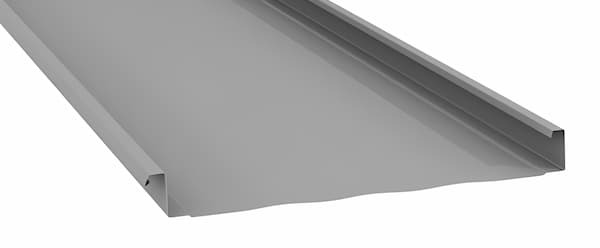
The Centria SDP200 panel builds on the company's reputation for superior strength and weather resistance.
Designed for low-slope commercial and industrial roofing, this asymmetrical standing seam system features a 2-inch seam height. It is available in 16-inch or 18-inch widths in 22- and 24-gauge base material. The SDP200 accommodates panel runs up to 48 feet without endlaps, minimizing potential leak points and improving overall performance. See the Roof Anchor Compatibility Chart for Centria (aka as H.H. Robertson) SDP200 Mechanical Standing Seam Panels.
The panel includes a factory-applied sealant and a tight side seam for dependable watertight performance. Centria offers the SDP200 in Galvalume®, Galvanized, and Galvalume® Plus coatings for maximum corrosion resistance, with optional striated, planked, or pencil bead finishes for added visual depth.
Engineered for strength and simplicity, the SDP200 meets UL 580 Class 90 and ASTM E1592 standards, ensuring reliable wind uplift performance. Its "hook and rotate" installation method saves time while guaranteeing consistent engagement of each seam, making it an ideal choice for projects that demand speed, durability, and architectural precision.
Fall Protection for SDP200 Panels
Installing or maintaining Centria SDP200 panels requires a fall protection plan that supports worker mobility while retaining the roof's structural integrity.
For 22- and 24-gauge steel versions, the SSRA1 Standing Seam Roof Anchor remains the cornerstone of the system. It grips the seam firmly without penetrating the surface, protecting the roof coating and providing a 5,000-pound-rated, non-penetrating anchor point for personal fall arrest systems.
To accommodate extended access areas, the SSRA2 Adjustable Roof Jack Adapter mounts on top of two SSRA1 anchors to hold walkboards up to 10 feet long. The adjustable legs fit the SDP200's taller 2-inch rib profile, giving crews a balanced platform for safe, comfortable work.
The SSRA3 Anchor Plate provides a stable connection between two SSRA1 anchors, creating a secure foundation for horizontal lifeline systems. Used with the SSRA HLL 100-foot Temporary Horizontal Lifeline Kit, it keeps two workers tied off continuously while allowing them to move efficiently across large roof areas. For permanent access on high-maintenance facilities, the Super Anchor 120-foot Permanent Horizontal Lifeline Kit offers a fixed tie-off solution that maintains weather-tight integrity and reduces setup time for future work.
For steeper installations between 6:12 and 12:12, the Ridge Pro Steep Assist Anchor provides a reliable ridge-mounted tie-off point. Its quick setup and non-penetrating design make it ideal for short-term maintenance or inspection work while preserving the roof's finish and warranty coverage.
Together, these systems deliver a comprehensive, OSHA-compliant fall protection strategy for Centria's SDP200 standing seam panels.
Standing Seam Metal Roof Anchor Panel Compatibility Chart For Centria
| SRS 3 18-22 Ga. | SRS-3 24 Ga. | Versapanel | SDP175 22 Ga. | SDP175 24 Ga. | SDP200 22 Ga. | SDP200 24 Ga. | |
|---|---|---|---|---|---|---|---|
SSRA 1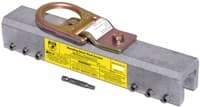 |
YES | NO | NO | YES | NO | YES | NO |
SSRA1 Nylon Tip |
YES | YES | NO | YES | YES | YES | YES |
SSRA2 Roof Jack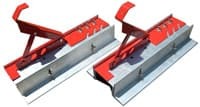 |
YES | YES | NO | YES | YES | YES | YES |
SSRA3 Anchor Plate |
YES | YES | NO | YES | YES | YES | YES |
The Ridge Pro |
YES | YES | YES | YES | YES | YES | YES |
Contact Us for Expert Standing Seam Fall Protection Advice
For expert guidance on standing seam roof anchors, lifeline kits, and fall protection systems that protect both your crew and your panels, contact us today at 863-703-4522 or visit www.StandingSeamRoofAnchor.com. Our safety specialists can help you match the right non-penetrating anchor to your specific roof profile and slope. Let's make your next metal roofing project safe, compliant, and built to last.
For continued learning, download OSHA's 48-page Fall Protection Manual and our free Anchor Inspection Form once you've selected the ideal anchors for your roof system. Together, we'll help you stay ahead of OSHA standards while preserving your roof's weather-tight seal.
Safety Tips For Standing Seam Roofs
Promote a Culture of Safety
Safety on a Centria roof starts long before the first SSRA1 anchor touches metal. Crews that talk openly about potential hazards, share lessons from close calls, and take ownership of each other's safety create a jobsite culture that lasts. A five-minute morning briefing can prevent a serious fall later in the day. When teams communicate clearly and trust the process, performance improves, and morale strengthens.
Use Specialized Anchor Systems for Standing Seam Roofs
Standing-seam metal roofs demand fall protection anchors engineered for precision and strength. Non-penetrating systems, like the SSRA1 Standing Seam Roof Anchor clamp, attach directly to seams without drilling, preserving the roof's finish and maintaining full warranty coverage. Always choose anchors rated for low-torque settings measured in inch-pounds, not foot-pounds, to avoid crushing seams. Workers should avoid anchors that require attachment over hidden clips, as those clips are nearly impossible to locate under existing panels.
Develop OSHA-Compliant Safety Plans
Every successful roofing project begins with a written safety plan that defines tie-off locations, rescue methods, and clear responsibilities. When crews understand where to connect, how to respond in emergencies, and who coordinates rescue operations, reaction times improve dramatically. A solid plan turns worker uncertainty into team confidence.
Install Permanent Roof Anchor Systems
Buildings that require frequent rooftop maintenance benefit from long-term solutions, such as the Super Anchor 120-foot Permanent Horizontal Lifeline Kit. This system eliminates the need for setup before every visit. It provides ready-made tie-off points for inspectors and service teams. It maintains OSHA and ANSI compliance, prevents surface damage to standing seam roof panels, and protects both workers and the building investment. Permanent anchors save time, reduce risk, and keep every future maintenance visit safer and more efficient.
Equip Workers with High-Quality Safety Gear
Top-tier fall protection depends on the quality of the gear workers wear. A properly fitted harness, a responsive self-retracting lifeline from Malta Dynamics, and reliable connectors build trust between the worker and the system. OSHA's 2025 updates place a greater focus on proper sizing and inspection of harnesses and SRLs. Crews equipped with comfortable, well-maintained gear stay compliant and confident, and that confidence leads to safer, faster, and more precise work.
Set Up Protective Guardrail Barriers for Work Zones
Guardrails remain one of the most effective tools for preventing rooftop falls. Installed around skylights, parapets, or roof edges, these barriers create visual and physical boundaries that guide worker movement. On large roofs, guardrails complement non-penetrating anchors by defining safe zones that reduce exposure to leading edges. This combination creates an organized, predictable workspace where safety and productivity coexist seamlessly.
Encourage the Use of Trauma Straps
When a fall occurs, the harness may arrest the fall, but trauma straps can help prevent internal injuries. These small yet critical accessories attach to any full-body harness and allow a suspended worker to relieve leg pressure while waiting for rescue. When used with an SSRA1 Seam Anchor or Ridge Pro Steep Assist Anchor, trauma straps prevent suspension trauma and preserve circulation. They are compact, affordable, and should come standard on every harness.
Ensure Proper Footwear for Stability
Workers navigating metal panels need roofing boots with slip-resistant soles and firm ankle support. Quality footwear improves traction on metal panels, reduces fatigue, and helps workers stay focused on their task rather than their footing. Good boots and secure anchors form the foundation of every safe roofing project.
Consult Experts for Curved Metal Panels
Curved standing seam panels introduce variables that straight seams do not. Their shape requires professional evaluation to determine the most suitable equipment to deploy. A qualified fall protection expert can decide if Ridge Pro anchors, strap-based systems, or custom-engineered solutions are appropriate without distorting the seams. This step ensures complete OSHA and ANSI compliance while maintaining the roof's visual and structural integrity.
Prioritize Ladder Safety Training
Many roofing accidents occur before anyone even reaches the roof. Ladder training is the first and most consistent line of defense. Workers should inspect ladders for damage before every use, maintain three points of contact, and follow the four-to-one rule for stability. Proper ladder placement and awareness are the most straightforward and most powerful tools for preventing falls before the job even begins.
Disclaimer
The views, recommendations, and information presented in this blog are solely those of the author and do not necessarily reflect the opinions or positions of the featured panel manufacturer, its brands, subsidiaries, or parent companies. Customers are strongly encouraged to contact the roof panel manufacturer directly for inquiries regarding fall protection compatibility with their products and to address any potential warranty issues that may arise after installing our products.

